Vertical/Short Take Off Vertical Landing (V/STOL) combat jet aircraft began to enter service to operate from normal bases, damaged airfields, rugged forward field deployments close to combat zones and from air-capable ships such as aircraft carriers and helicopter carriers. The United Kingdom, France, West Germany, the Soviet Union and the United States dabbled with V/STOL aircraft designs but ultimately only the UK and the Soviets were successful in developing operational combat aircraft during this early period.
These early generation V/STOL combat jet aircraft were very work intensive for the pilot (especially in vertical take off and landing) and many compromises had to be made in regards to performance and weapons load. In other words just to take off and land like this, they needed plenty of thrust to get airborne but weapons load, fuel capacity and speed needed to be sacrificed to do it.
Over the years I have seen a lot of these early V/STOL aircraft in museums and also had the privilege to see a number of more recent types take to the skies. There is always something special about seeing a jet fighter just hovering in front of you. In my previous post I covered the early experimental prototype V/STOL combat aircraft of the 1950’s and early 1960’s. The following is a brief history on some of the more significant first generation V/STOL combat jet aircraft developed in the late 1960’s through to the late 1970’s, including further experimental prototypes, operational aircraft and those developed in the Soviet Union.
ENTER THE HARRIER
The first generation operational V/STOL combat aircraft was the Hawker Siddeley Harrier ground attack and tactical reconnaissance aircraft, which was a development of the Hawker Siddeley Kestrel FGA.1 prototype and were subsequently built with the Rolls Royce Pegasus engine from 1967 into the 1970’s and the first became operational in 1969. The Harrier had a top speed of 1,176 km/h / 730 mph and could be operated from land bases, unprepared landing areas and aircraft/helicopter carriers but had a relatively short-range and limited weapons payload. Despite the performance limitations it proved to be a successful aircraft and served for many years operating from both land and sea with the Royal Air Force, US Marine Corps and Spanish Navy to become a true Cold War warrior. All of the early Harrier variants are now retired.
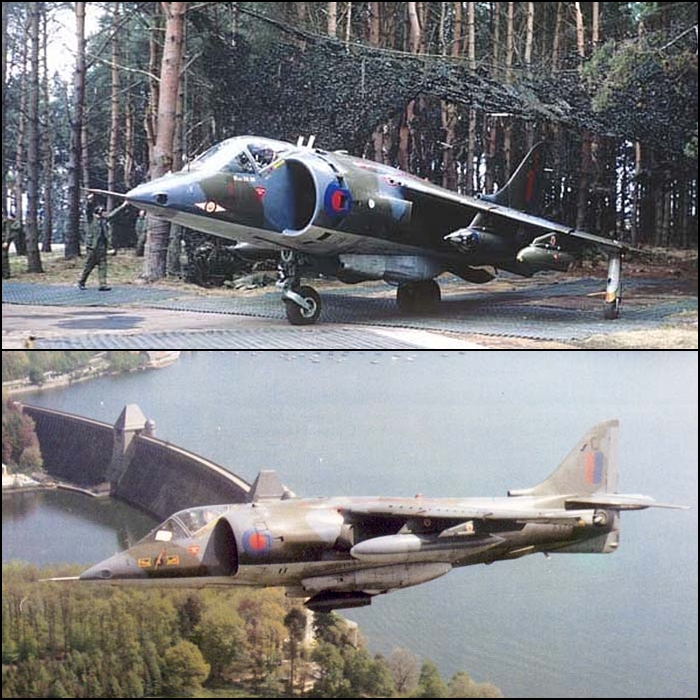

The Royal Air Force operated 61 Hawker Siddeley GR.1 Harrier which first entered service in 1969 with the Pegasus 6 Mk.101 engine and then the GR.1A with an uprated Pegasus 10 Mk.102 engine (17 new GR.1As were built and 41 GR.1’s were upgraded). Around 62 earlier GR.1/1A aircraft were later upgraded to the GR.3 Harrier standard along with 40 new aircraft which featured a more powerful Pegasus 11 Mk.103 engine, improved sensors, an extended bulbous nose containing a laser tracker and integrated Electronic Counter Measure (ECM) equipment (the last GR.3 was delivered in December 1986). RAF Harriers were deployed to West Germany, Norway, Belize and were proven successful in combat during the 1982 Falklands War with Argentina (see below for more information). RAF GR.3’s were also deployed to the Falkland Islands from August 1983 to June 1985 as part of a force to deter further Argentine aggression. RAF GR.3’s were retired in 1994. The RAF also operated 26 T.Mk.2/2A/4/4A Harrier two seat trainer variants.

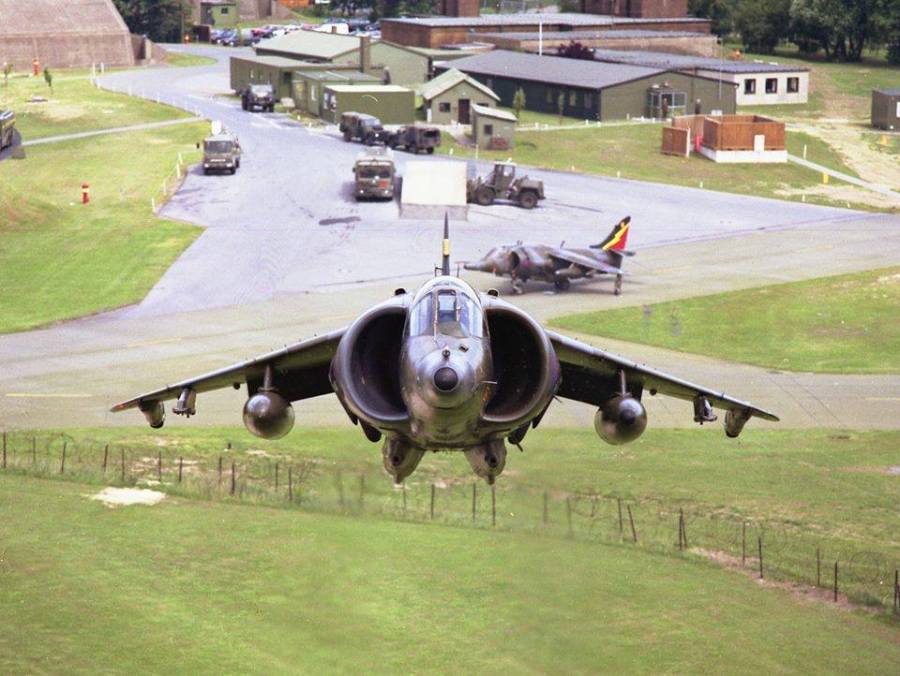
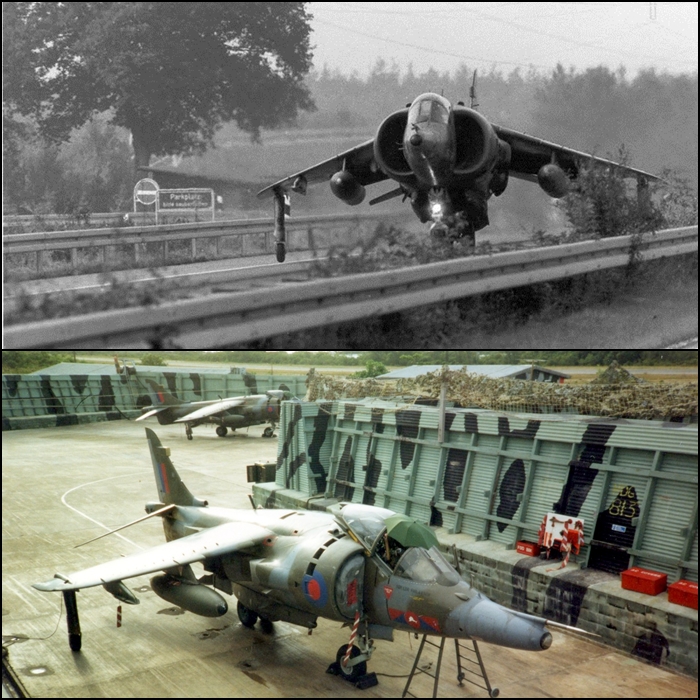
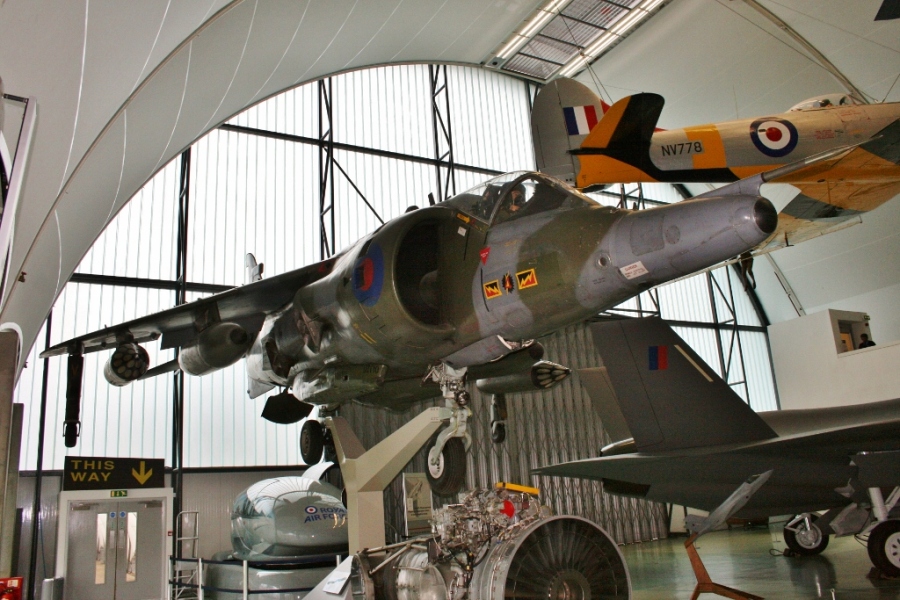
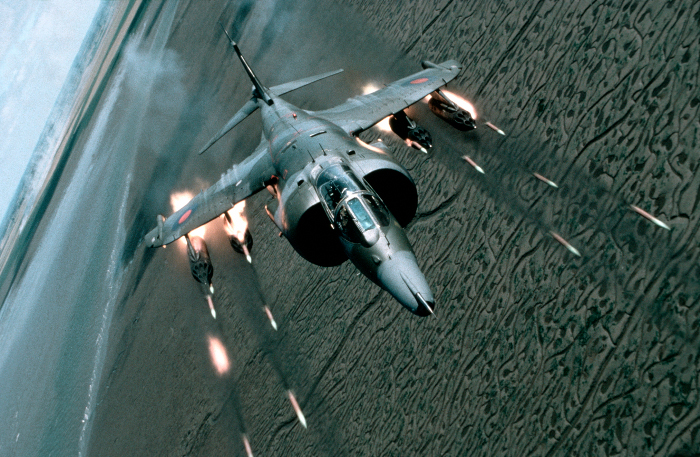
The Royal Navy operated 3 T.Mk.4N and T,Mk.8 Harrier two seat trainer variants for pilot transition to flying Sea Harriers. The T.Mk.4N was fitted with Sea Harrier avionics but excluded the radar and the T.Mk.8 was fitted with the upgraded Sea Harrier F(A).2 avionics. The Indian Navy continues to operate the T.Mk.60 Harrier two seat trainer (an export version of the T.Mk.4N) for Sea Harrier pilot training (see below for more information on the Sea Harrier).
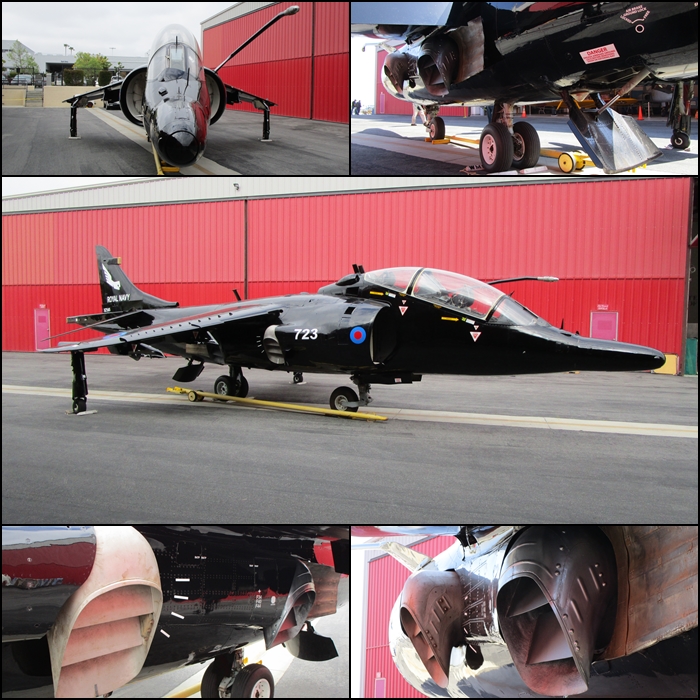

The US Marine Corps operated 102 AV-8A/C fighters and 8 TAV-8A two seat trainer variants from 1971 to 1987 (the last was delivered in 1976). The AV-8 was similar in appearance to the GR.1 Harrier with most featuring the more powerful Pegasus 11 Mk.103 engine of the GR.3. All AV-8’s were fitted with US communications, ejector seat, IFF equipment and weapons systems, the outer weapons pylons were rigged from the start for AIM-9 Sidewinder air-to-air missiles and all magnesium components were replaced as they were more corrosive in the sea air. The C models introduced from 1979 were upgraded AV-8A’s that had structural improvements to increase the airframe life along with the installation of ECM equipment and a new inertial navigation system installed along with improved VTOL performance. USMC aircraft were operated from amphibious assault ships, transport ships, aircraft carriers and from land bases.
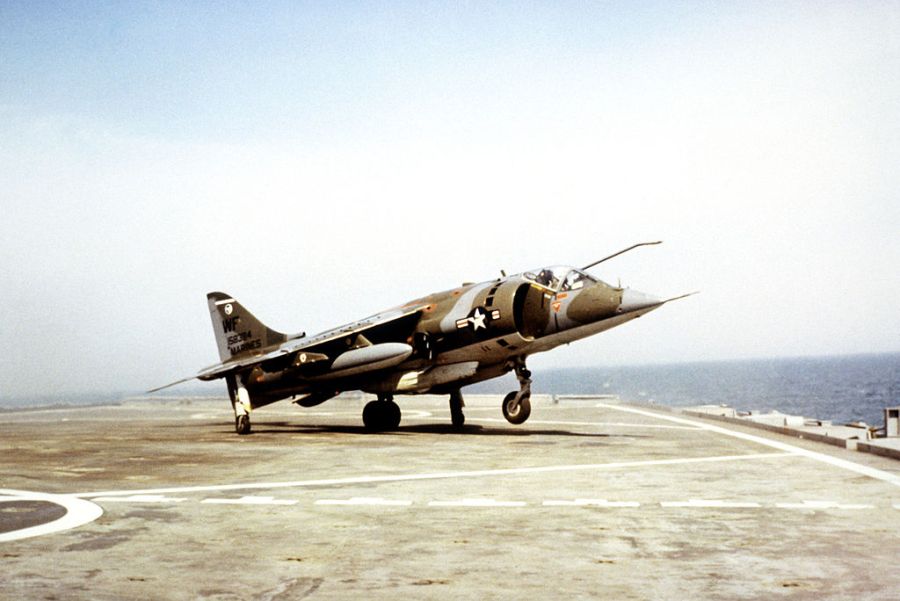

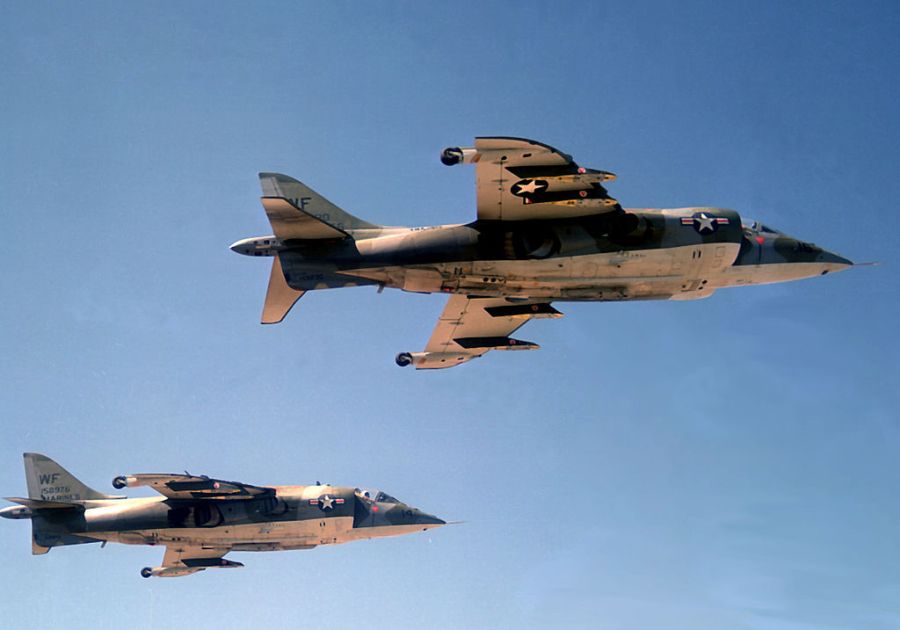
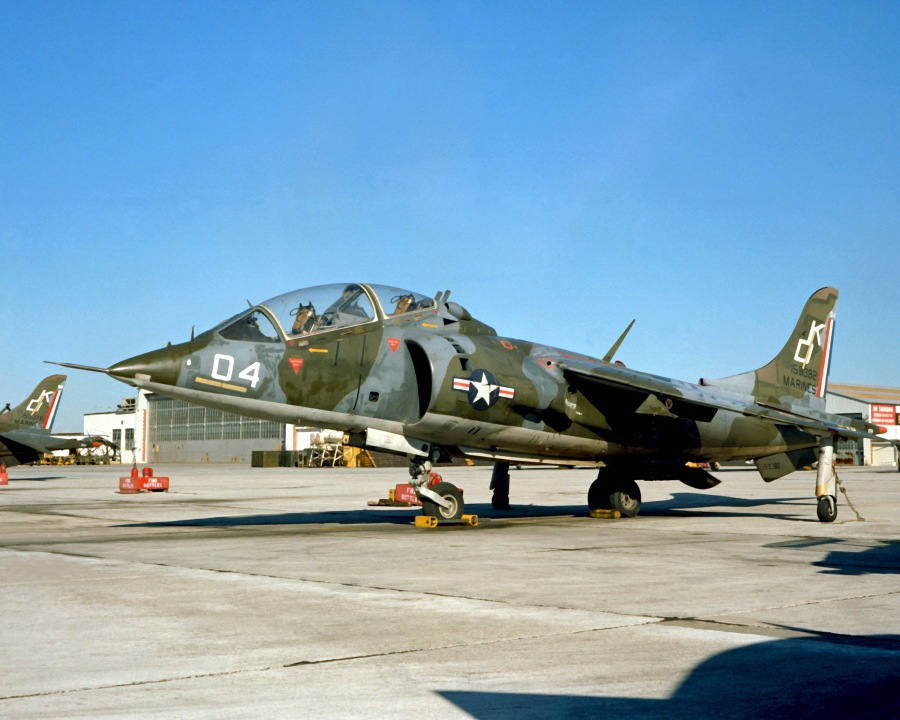
The final Harrier variant was the AV-8S Matador and TAV-8S two-seat trainer operated by the Spanish Navy from their carriers from 1976 to 1998 (they received 11 AV-8S and 2 trainers). The AV-8S was almost identical to the USMC variants with the exception of having different radio equipment installed. The Spanish sold 10 to the Thai Navy in 1998 including the 2 TAV-8S trainers. The Thai Navy operated them from their aircraft carrier until the last were retired in 2006 (the Thai Navy had a lot of issues in keeping them airworthy due to a lack of funding and spare parts).
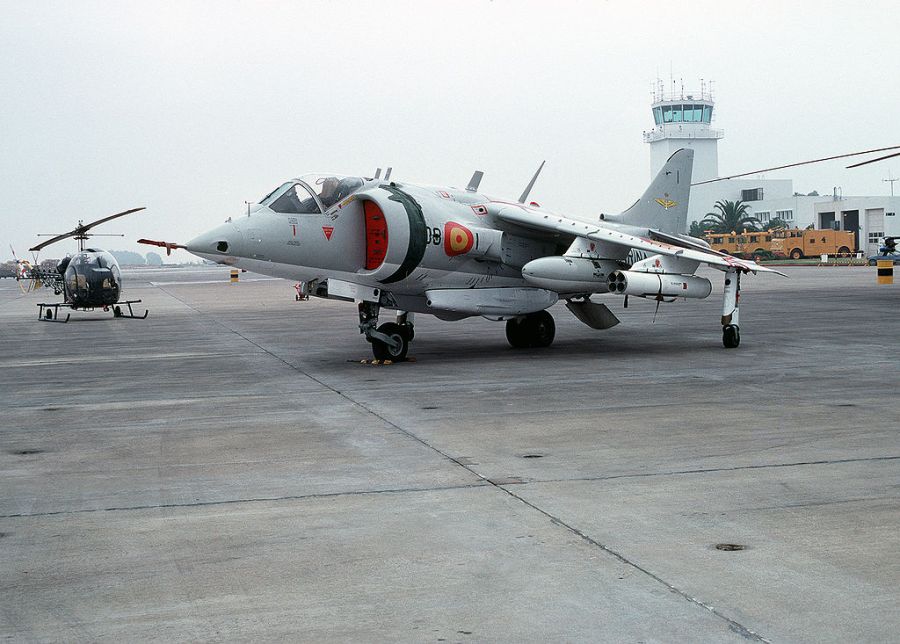
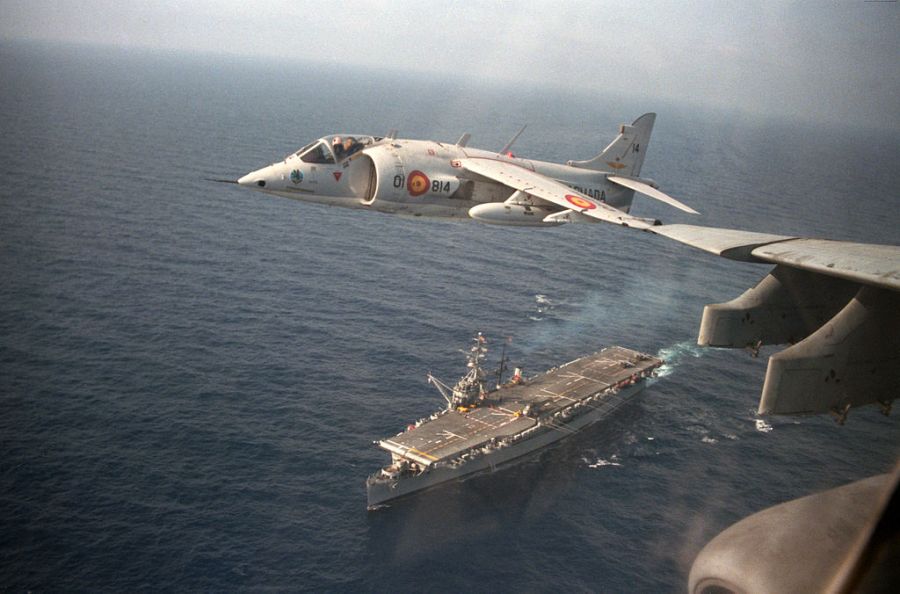
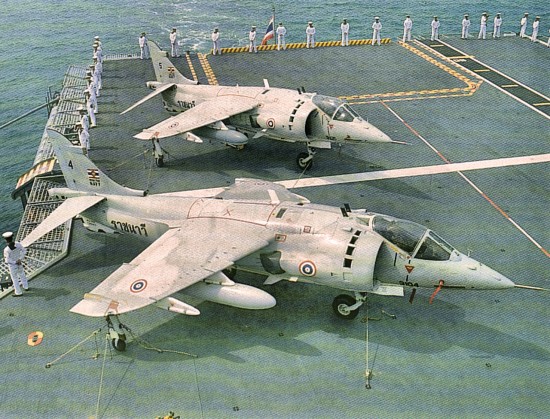

WEST GERMAN V/STOL
In the late 1960’s German aviation company Vereinigte Flugtechnische Werke (VFW) developed the VFW VAK 191B which was an experimental V/STOL nuclear strike fighter intended to replace the Fiat G.91 light strike fighter in use by Italy and West Germany and compete with the Harrier. The VAK 191B was fitted with a Rolls-Royce/MAN Turbo RB.193 vectored thrust turbofan engine for lift and horizontal flight along with 2 Rolls-Royce RB.162 lift turbofans for VTOL. 3 aircraft prototypes were built.

VAK 191B test flights were conducted between 1970 to 1975, with the first transition test from vertical to horizontal flight conducted in October 1972. It was similar in ways to the Harrier but although designed to be faster in its ability to perform a supersonic dash, the VAK 191B had a much poorer thrust to weight ratio (plus the weight of 2 extra engines that were only used for vertical lift) and smaller wings which were not as effective for rolling short take-off, nor capable of carrying much of a weapons payload. In testing the VAK 191B only reached a speed of Mach 0.92 (the planned version was intended to be capable of speeds up to Mach 1.4). The Harrier was generally superior in all round capability and with development of the Panavia Tornado strike aircraft by Italy, West Germany and the UK (planning began in 1968 and Italy left the VAK 191B program that same year), the VAK 191B project was cancelled as a combat aircraft. The prototypes were instead used as a technology demonstrator and to test avionics for the Panavia Tornado. All 3 VAK 191B prototypes are in German museums today.
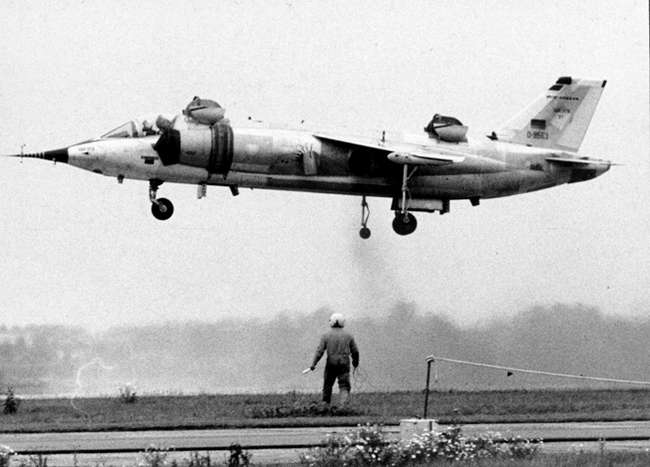

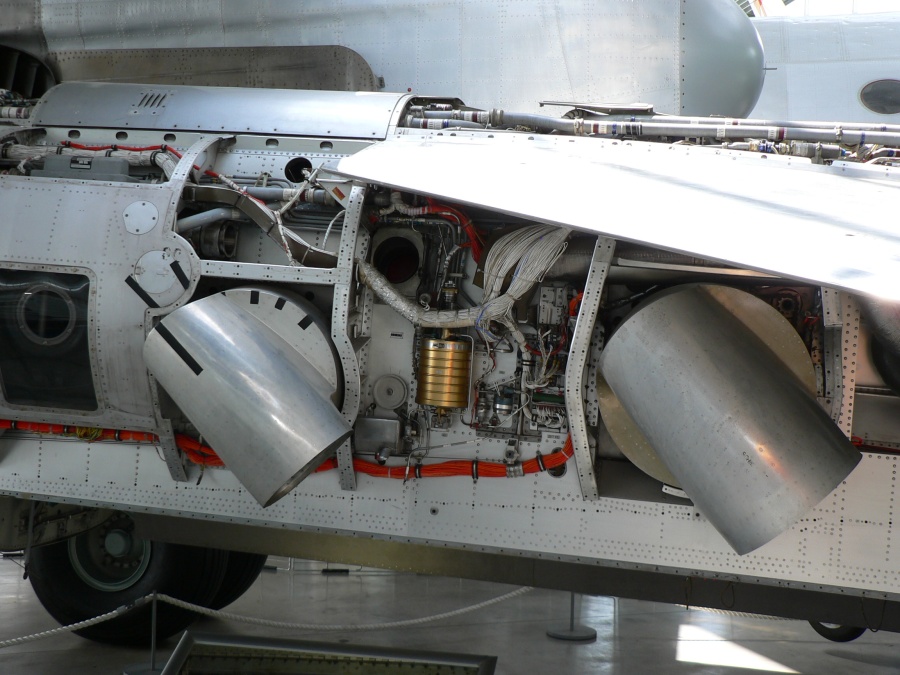
SOVIET V/STOL
The Yakovlev Yak-38 Forger carrier borne attack fighter was a Soviet V/STOL aircraft contemporary of the Harrier. It first flew on January 15th, 1971 and was operated by the Soviet Navy from 1976 to 1991 primarily off the 4 Kiev class aircraft carriers. The Yak-38 differed in engine design from the Harrier in that it had one large turbojet afterburning engine with vectorable thrust for lift/horizontal flight (maximum speed 1,280 km/h / 795 mph) and two smaller less powerful downward turbojets engines for VTOL (located behind the pilot). This engine layout was similar to that used in the VFW VAK 191B. Interestingly the Yak-38 featured an automatic ejection seat which would be activated if the VTOL engine failed and the aircraft rolled beyond 60 degrees.

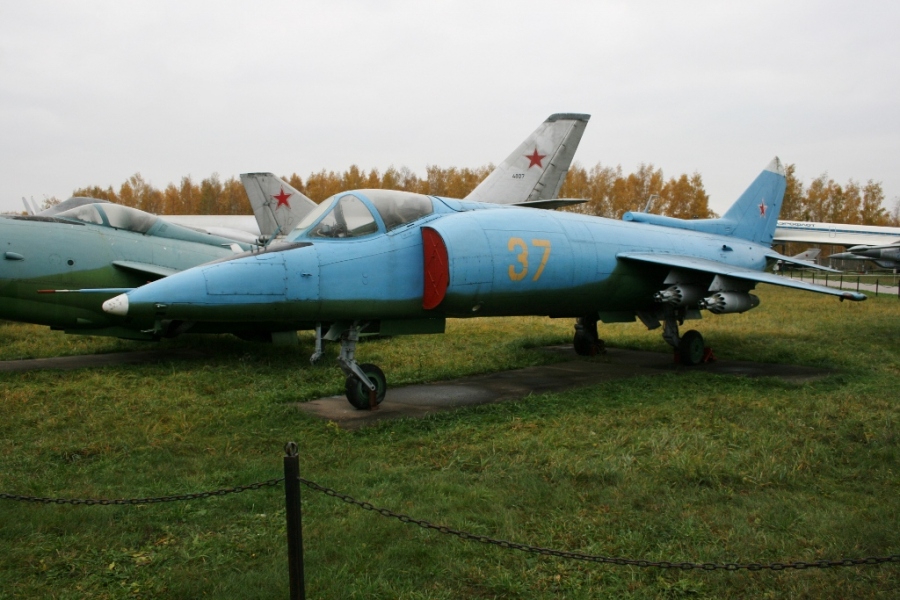
231 Yak-38’s were built. 143 were the original Yak-38 Forger-A which entered service in 1976 and were fitted with a Tumansky R-27 V-300 vectored-thrust afterburning engine and 2 Kolesov RD36-35FV turbojets for VTOL. To facilitate pilot training 38 Yak-38U Forger B two seat trainers were delivered between 1978 to 1981. In 1985 an additional 50 Yak-38M Forger A fighters entered service with the Soviet Navy. The Yak-38M was an upgraded and improved variant with a more powerful Tumansky R-28 V-300 vectorable thrust afterburning engine and two Kolesov RD-38 turbojets engines for VTOL. The added power also enabled the Yak-38M to carry an increased weapons payload (adding some 2,000 lb / 910 kg to the maximum VTOL take-off weight).

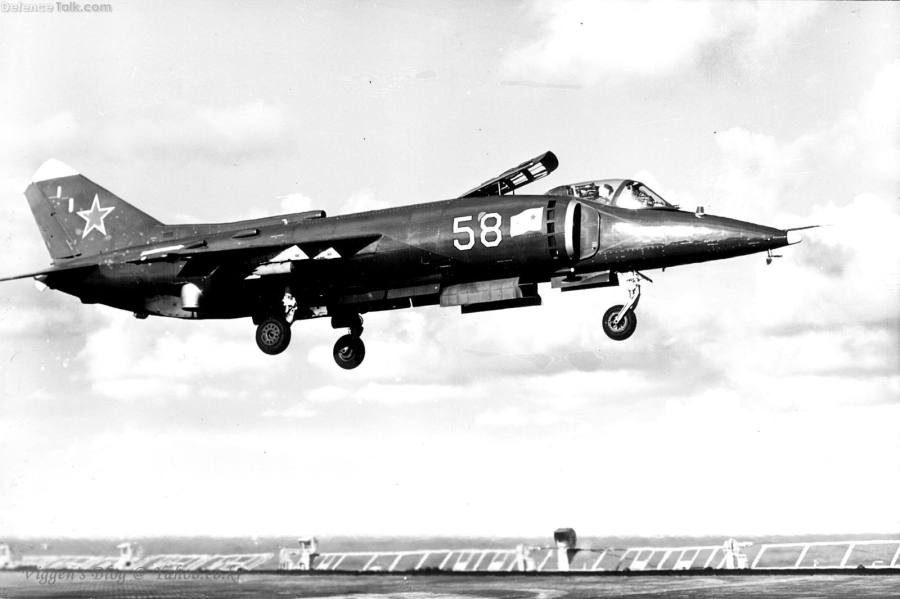
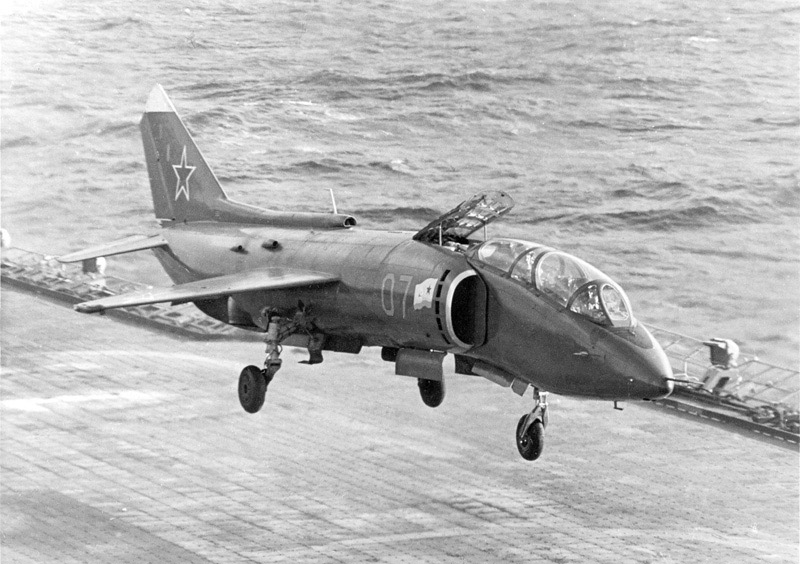
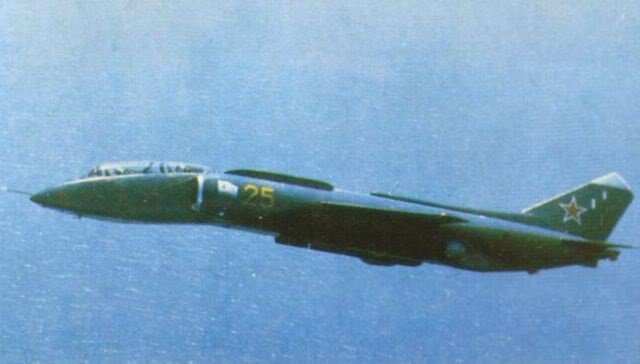
The Yak-38 had many limitations and sounds like it wasn’t overly liked by the pilots but the Soviet Navy needed a fighter for the smaller Kiev Class carriers which could not accommodate conventional take off fighters and the Forger was it (until the entry of the Admiral Kuznetsov class aircraft carrier in 1990). Due to the multiple engine design (abandoned for good reason in earlier western V/STOL projects as they were deemed to complicated for operational service) the Yak-38 was difficult and potentially dangerous for pilots to make successful take-offs and landings (a large number are said to have been lost in accidents – potentially up to one third of the fleet). The lift engines were also unreliable and had a short lifespan (said to be around 22 hours), plus they used a lot of fuel when in VTOL mode and the operational range of the Yak-38 was very limited at approximately 100 kilometers / 60 miles (in hot or humid conditions this was even less!). The fuel and range issues resulted in the fighter rarely carrying a full weapons payload. It doesn’t sound great and many were grounded when deployed on the carriers due to engine unreliability (I bet the pilots were actually happy about that!).
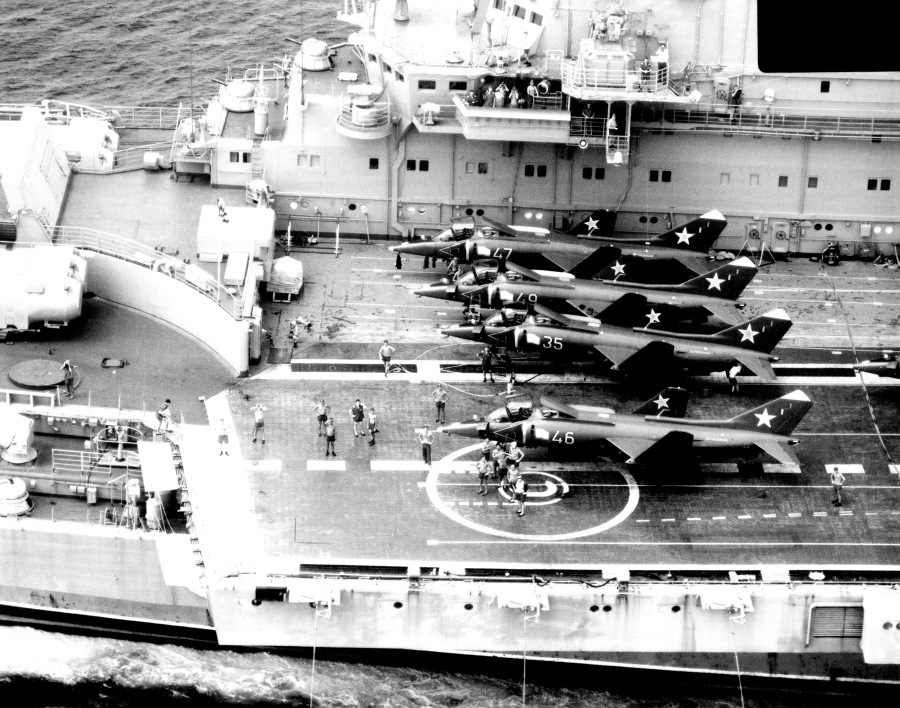
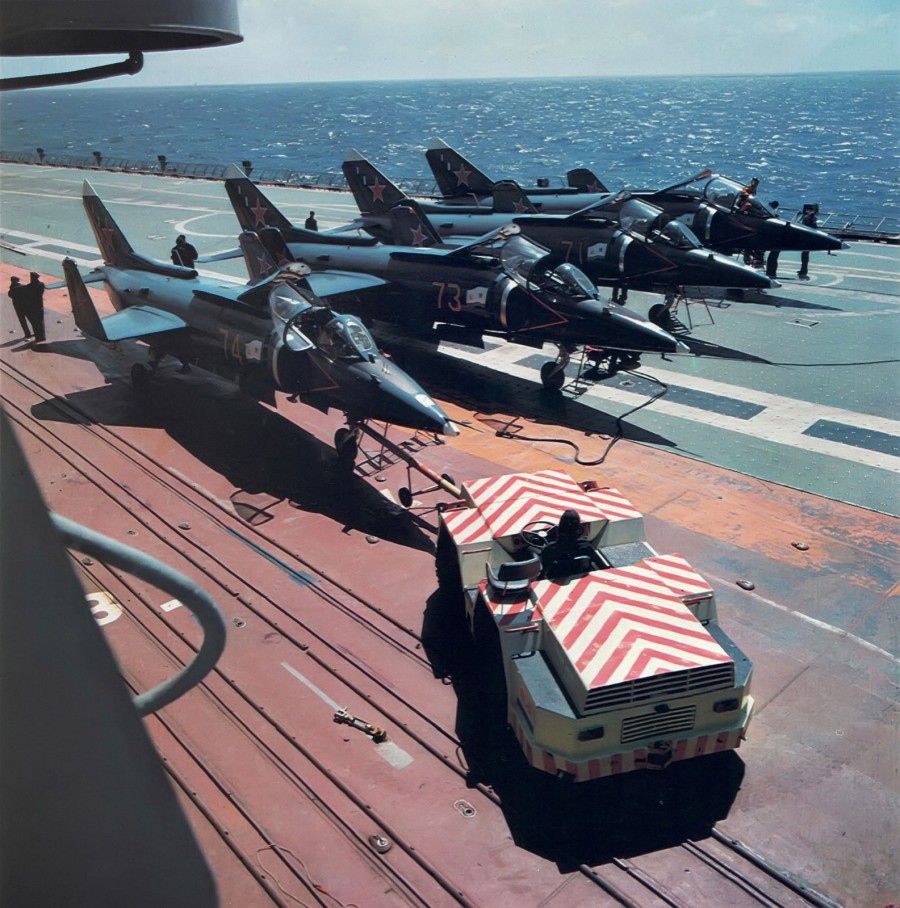

The type was briefly trialed in combat in Afghanistan in 1980 but apparently the 4 aircraft sent only conducted around 12 operational missions due to engine problems in the hot conditions and higher elevation of the terrain there (this also limited the weapons payload). Maintaining unreliable engines in the harsh conditions of Afghanistan was also not ideal. They also kicked up a lot of dust upon take-off and landing which wasn’t ideal for operational effectiveness as it created an extreme hazard for the pilot who most likely couldn’t see a thing, yet alone what was ingested into the already unreliable engines (one Yak-38 is said to have been lost in Afghanistan in a non-combat incident)!
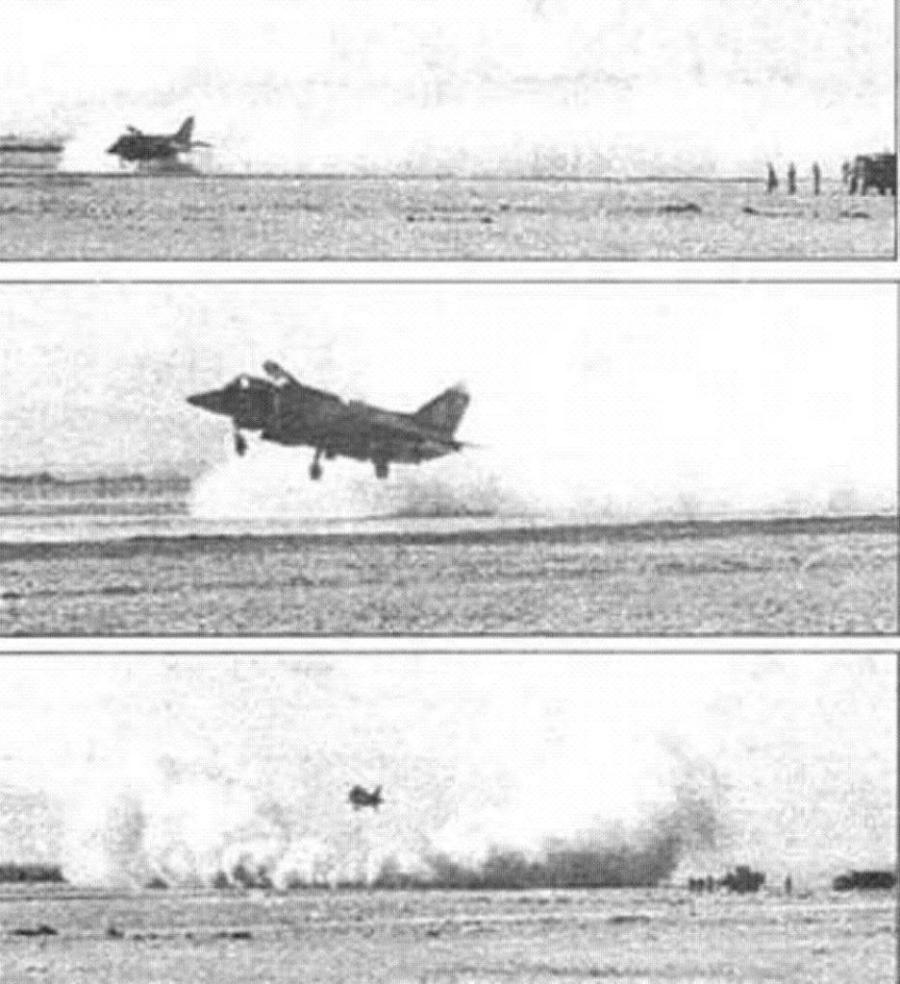
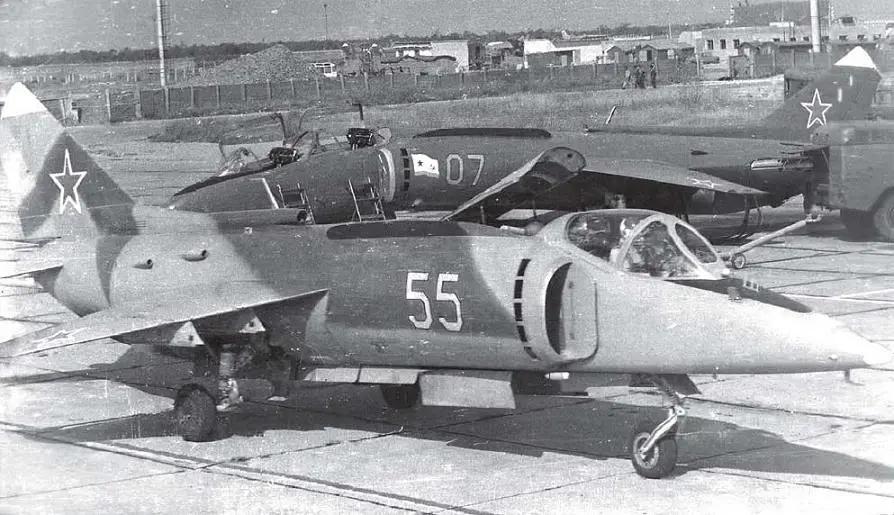
Despite being less accomplished than the Harrier and having no air to air radar, limited range and a limited weapons payload (half of what the Harrier could carry), the Yak-38 soldiered on in the fleet air defence role for the Soviet Navy. It was not until the end of the Cold War, when sense finally prevailed and it was removed from service!
SUPERSONIC V/STOL REVISITED
In 1972 the US Navy put out a request for proposals on a second generation supersonic V/STOL fighter. The Navy chose the unusual looking Rockwell XFV-12A Mach 2.0 capable prototype V/STOL fighter design. It was intended to be capable of carrying short-range AIM-9 Sidewinder and medium range AIM-7 Sparrow air to air missiles and launching from the Sea Control Ship (SCS) concept that was being discussed in the 1970’s to be used as a small aircraft carrier for fleet escort duties. The XFV-12A design was to be a more powerful and more heavily armed alternative to the Harrier. Engine rig testing began in 1974 and a prototype aircraft was ready for ground tests in 1977. Due to cost restrictions only 1 prototype was constructed (it used an A-4 Skyhawk nose and F-4 Phantom II intakes to further reduce costs). Tethered hover tests commenced in 1978.
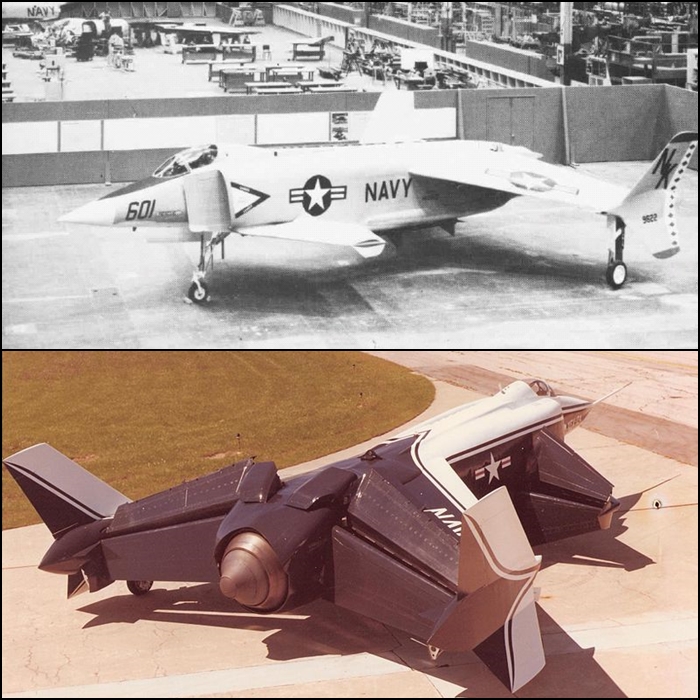
The XFV-12A aircraft used a thrust augmented wing concept where the exhaust from the Pratt & Whitney F-401-PW-400 afterburning turbofan engine would be closed and ducted through ducts in the wings and canards to create vertical lift (this meant weapons could only be carried under the fuselage). Unfortunately the XFV-12A was unable to produce enough thrust for vertical flight (the engine could only lift 75% of the weight of the aircraft!). The tests were not promising and costs were rising, so the project was cancelled in 1981. The SCS concept was also cancelled due to US Navy budget cuts but the basic design concepts were further developed with the addition of ski-jumps into Spanish Navy and Italian Navy carriers that operated the Harrier (the Royal Navy Invincible Class through deck carriers were developed separately from different design concepts).
SEA HARRIER
The British Aerospace Sea Harrier was a carrier borne V/STOL naval fighter developed from the Harrier for the Royal Navy and was also sold to the Indian Navy. The Sea Harrier was fitted with the Rolls Royce Pegasus 14 Mk.104 vectored thrust engine (a navalised variant of the Mk.103 with corrosion resistant engine parts) with a maximum speed of 1,182 km/h / 735 mph. The Sea Harrier had extensive corrosion-proofing, a raised cockpit for better pilot vision and was fitted with a nose radar for air to sea and air to air combat. The FRS.1 variant was first introduced in the Royal Navy in 1978 with a Blue Fox multimode radar (57 were delivered between 1978 and 1988). These aircraft were blooded in the 1982 Falklands War with Argentina and proved to be highly successful in air combat. Sea Harriers were used for combat duties again during the 1990’s conflicts in the former Yugoslavia (see below for further information on the Falklands War and Yugoslavian conflicts).

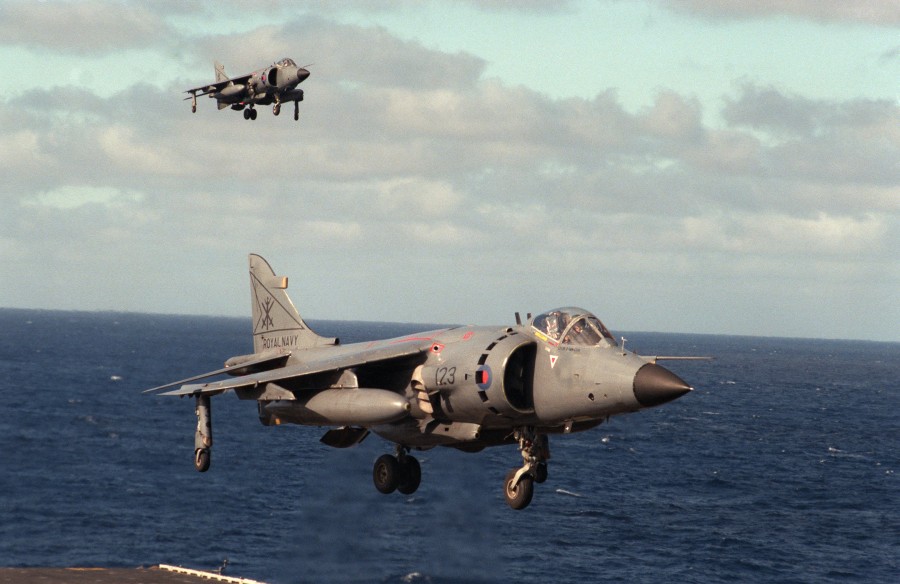
29 Royal Navy Sea Harrier’s were upgraded to the F(A).2 variant from 1988 onwards along with 18 new build aircraft, with the first entering service in 1993 The F(A).2 was fitted with a Pegasus 11-21 Mk.106 engine, the advanced Blue Vixen pulse-doppler radar and Raytheon AIM-120A AMRAAM medium-range air-to-air missiles. All Royal Navy Sea Harriers were retired from service in 2006.



The Indian Navy continues to operate the FRS.51 Sea Harrier from their aircraft carriers. The Indian variant is basically a Sea Harrier FRS.1 with French weapons systems and has been in service with the INAS 300 and INAS 552 squadrons since 1983 but have had ongoing avionics and weapons systems upgrades to maintain operational effectiveness. 23 FRS.51 Sea Harrier single seat fighters and 4 T.Mk.60 Harrier two seat trainers were delivered between 1983 and 1985 along with 2 T.Mk.4(I) trainers in 2002 (converted ex-RAF T.Mk.4 trainers). Only 8 FRS.51’s and 3 trainers from that total are now operational due to accidents and serviceability issues (they are expected to be retired in 2016 as the Indian Navy decommissions their older INS Viraat aircraft carrier and continues to fly MiG-29K’s off their newer aircraft carriers).

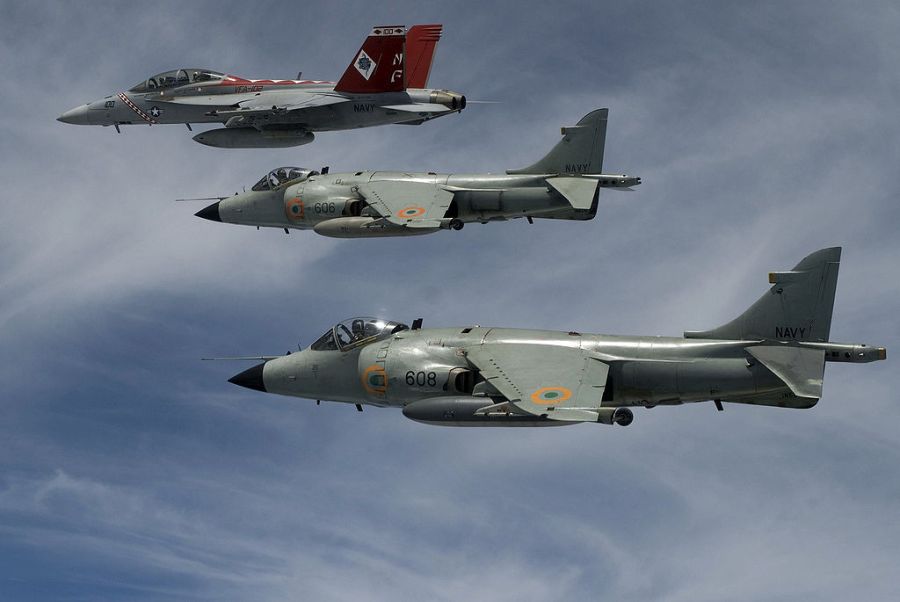
I only ever got to see a Sea Harrier in flight on a couple of occasions in Australia during Royal Navy visits in the mid to late 1980’s. The best was when an Australian pilot on exchange with the Royal Navy was given permission to do a Sea Harrier flight display in his home town of Bendigo, Victoria. I pestered my parents to take me there and luckily they did! All these years later I am yet to get a close look at one in a museum though!
HARRIERS IN COMBAT
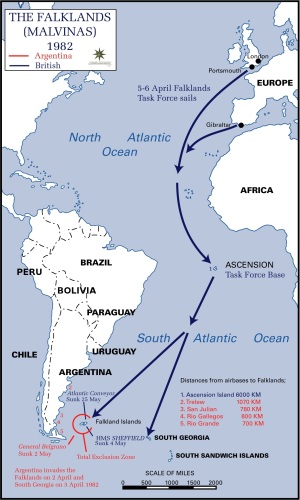
The Falklands War
Royal Navy Sea Harriers saw operational service in the 1982 Falklands War against Argentina. On April 2nd, 1982 Argentine forces invaded the Falklands Islands (Islas Malvinas) which to this day remain a disputed territory. They did not think the UK would retaliate with military action but this was a big mistake and just 3 days later the Royal Navy dispatched a task force to make the long journey to the south Atlantic and retake the islands. The war lasted for 74 days, ending in Argentine surrender and return of the Falklands on June 14th, 1982.
Both the RAF Harrier GR.3 and Royal Navy Sea Harrier FRS.1 armed with 2 x 30mm ADEN cannons and the then new AIM-9L Sidewinder heat-seeking air-to-air missiles were proven to be successful during combat missions in the Falklands War. Deployed from the HMS Hermes and HMS Invincible aircraft carriers, the Royal Navy sent 28 Sea Harriers for Combat Air Patrol (ground attack was a secondary role) and the RAF sent 10 Harrier GR.3’s for ground attack to the conflict (flying around 150 combat sorties against Argentine ground targets).
Early on Argentine Mirage III fighters were detected at high altitude trying to lure the Sea Harriers out of their optimal lower level operational height. The Royal Navy pilots did not take the bait. Soon enough though they did become engaged in air combat and although outnumbered the Sea Harrier pilots utilizing the aircraft’s manoeuvrability along with their superior tactics and training shot down some 21 Argentinian military aircraft (plus some helicopters) with no air to air losses.
2 Sea Harriers were lost to ground fire and 4 in accidents. 4 Harrier Gr.3 were lost: 2 from ground fire, 1 was damaged from ground fire and the pilot had to eject due to a loss of fuel. The last Gr.3 landed heavily and was damaged beyond repair. Following early losses the Argentines would often use Mirage III fighters and civilian jets in feint attacks to try to lure the Sea Harriers away from strike formations but ultimately this did not stem the losses (a Learjet was shot down by a Royal Navy missile on one of these missions). Argentine aircraft lost in air combat included supersonic Mirage III (1 and another was damaged in the same incident but unfortunately got shot down by Argentine AA when the pilot tried to make an emergency landing on the Falkands) and IAI Dagger (9) fighters; an English Electric Canberra bomber; Douglas A-4 Skyhawk (8 Air Force 5 and Navy – 3 and FMA IA 58 Pucará (1) attack aircraft; and a Lockheed C-130E Hercules transport.

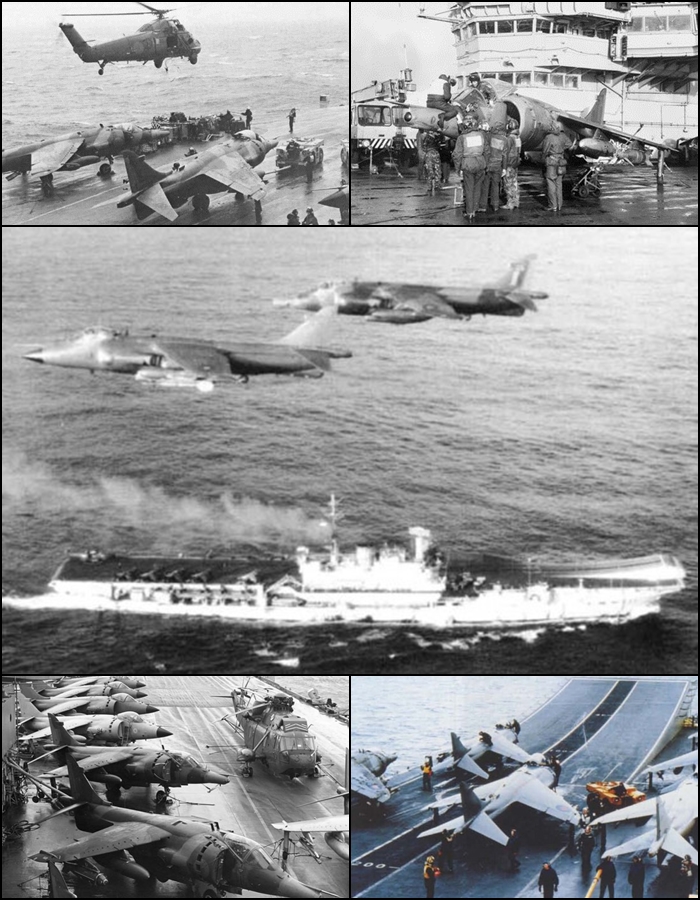
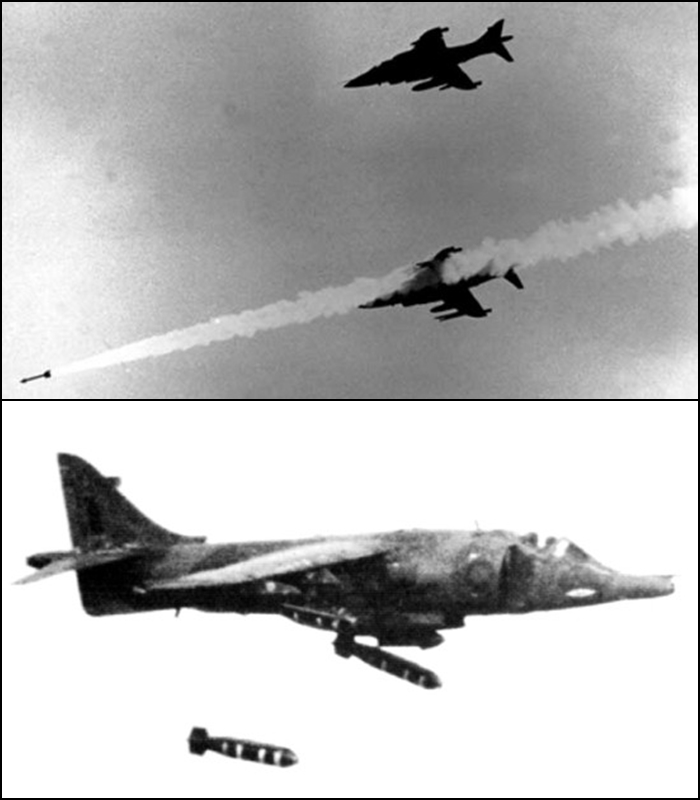
In addition to flying from Royal Navy ships, Harriers and helicopters also operated from a Forward Operating Base (FOB) at San Carlos in the Falklands Islands. After the area was secured and anti-aircraft defences were installed (Rapier SAM’s), British Engineers constructed a short runway (around 260 metres long) along with a separate landing and parking area that could accommodate 4 Harriers (originally planned for 12). Following the end of the Battle for San Carlos when the area was deemed safe enough for air operations the FOB was established on May 28th, 1982 and deemed fully operational by June 2nd (Harrier operations from the FOB commenced 3 days later). The FOB enabled longer combat air patrols and strike missions as the Harriers did not have to travel further to/from the ships at seas.
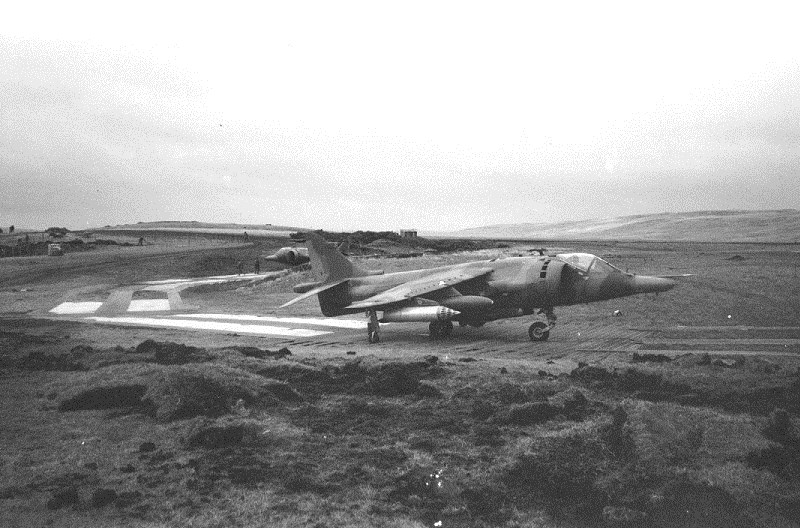
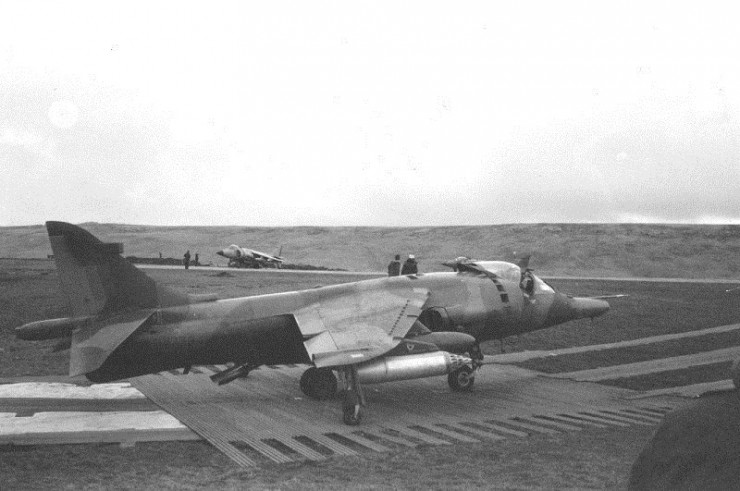
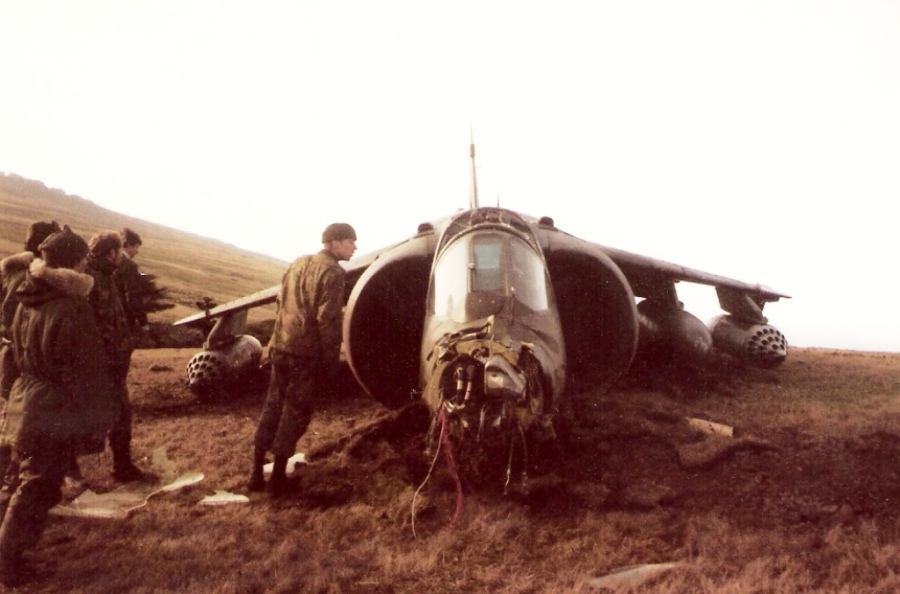

Despite their losses, there is no doubting the Argentine pilots bravery and their low level attacks would have inflicted far more damage if less of their bombs had failed to detonate upon impact with Royal Navy ships (the fuse times were not suitable for such low level, high speed attacks). That being said, the Argentines strikes with bombs and Exocet anti-ship missiles did contribute to the loss of 6 Royal Navy ships (2 destroyers, 2 frigates and 2 support ships – one of which was a civilian ship requisitioned by the navy, MV/SS Atlantic Conveyor) plus a landing craft (numerous other ships were damaged).
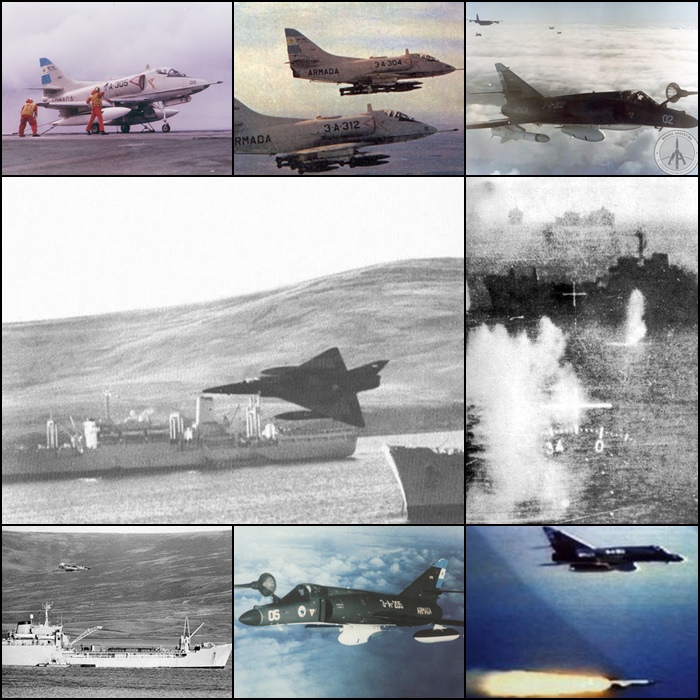
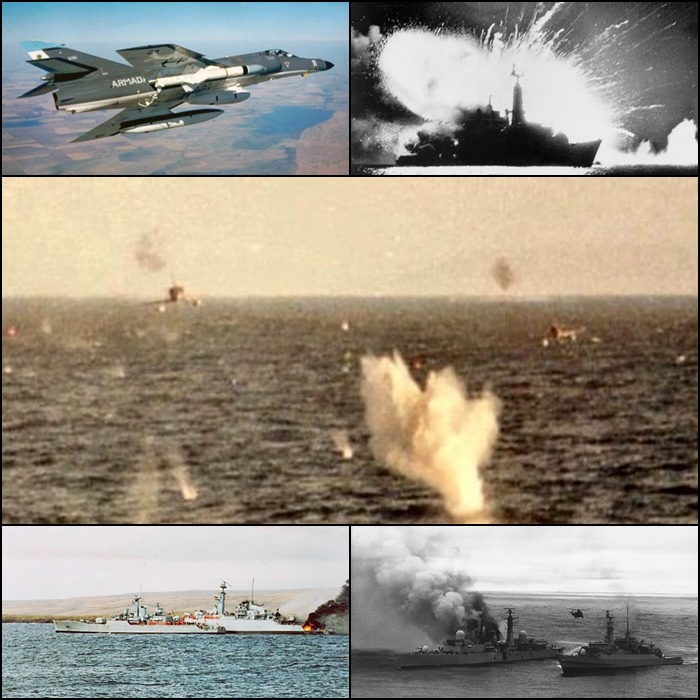
The Argentine Navy only had a limited number of Exocet missiles to launch from their Dassault Super Etendard strike aircraft which also helped to greatly reduce potential Royal Navy ship losses. Although 14 Super Etendard aircraft and more missiles were on order from France only 5 fighters and 5 Exocet’s had been delivered by the start of the war. All 5 Exocet’s were fired and 2 ships were sunk with the firing of 2 missiles at each – destroyer HMS Sheffield was struck May 4th, 1982 and MV/SS Atlantic Conveyor on May 25th, 1982. During an unsuccessful raid to attack the Royal Navy carrier HMS Invincible on May 30th, 1982, the fifth and final Exocet was shot down in flight by Royal Navy frigate HMS Avenger. The war was an expensive one for both parties and sadly resulted in the death of 649 Argentine and 255 British military personnel along with 3 Falkland Islanders.
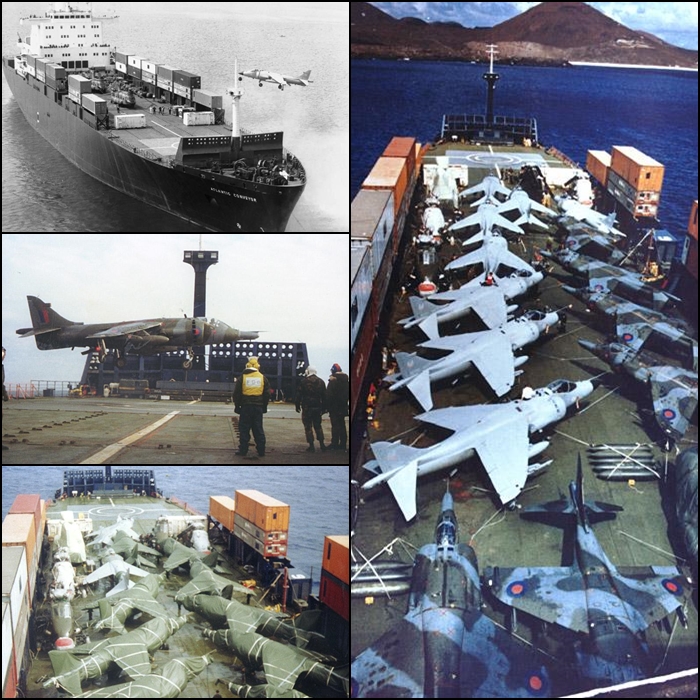

RAF Flight Lieutenant David Morgan was on exchange with the Royal Navy and only a third of the way through his training in flying the Sea Harrier when the Falklands War commenced (all pilots were required no matter their experience). He was credited with downing 4 aircraft during the conflict (2 Douglas A-4 Skyhawks and 2 helicopters – an Aerospatiale Puma and an Augusta 109), which was the highest tally of the war and he was awarded the Distinguished Service Cross for his bravery. The success of the Sea Harrier earned the nickname of “La Muerte Negra” from Argentinian opponents (“The Black Death” due to the dark paint scheme). The Harrier Gr.3’s were kept busy conducting strikes on Argentine positions and aircraft on the ground. To this day the Argentine Air Force has never truly replaced the losses of aircraft they suffered during the wrath of the Harrier (during the conflict they lost 75 fixed-wing aircraft and 25 helicopters to air combat, ground strikes, accidents, friendly fire and capture).
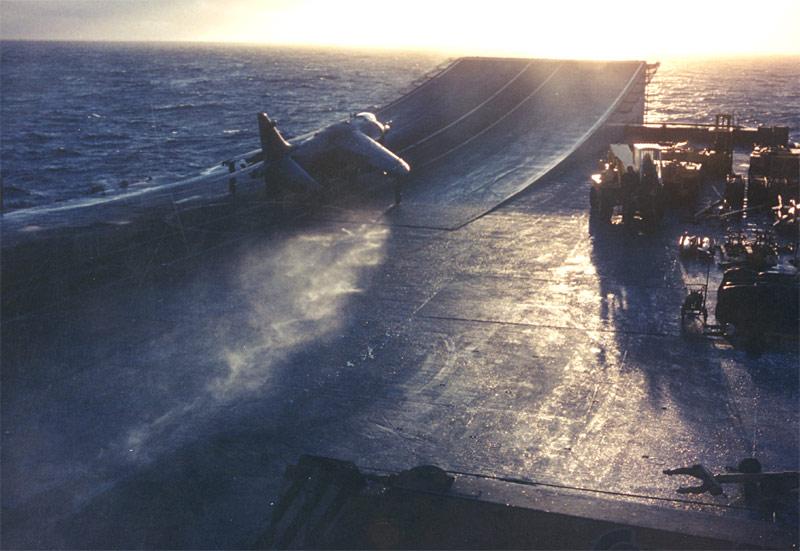
A huge factor in favour of the Sea Harrier during the Falkands War was that their Combat Air Patrols were always near the Royal Navy aircraft carriers but most of the Argentine fighters had to travel long distances from the mainland and could only engage in combat for a few minutes before having to return to base (the Mirage III and IAI Dagger were incapable of inflight refueling, only the Dassault Super Etendard and Douglas A-4 Skyhawk had this capability). This long distance combat was forced by the famous long range Black Buck raids by RAF Avro Vulcan bombers that took out the Port Stanley paved runway, rendering it inoperable for fast jets (not that it was really long enough for a fully laden Mirage to operate from but an aircraft like the Skyhawk designed to take off from an aircraft carrier most likely could have).
Another factor was the infamous sinking of the Argentine cruiser Belgrano on May 2nd, 1982 by a Royal Navy submarine which lead to the Argentine Navy returning their fleet to port, keeping their Douglas A-4 Skyhawk equipped aircraft carrier Vienticinco de Mayo well out of harms way (air refueled Argentine Navy A-4 Skyhawks and diesel submarines continued to stalk British ships though). Given the minimal combat time they had at their disposal, reportedly the Argentine pilots would fire their French Matra air to air missiles from maximum range. As we have seen, this tactic proved highly ineffective and the Harrier was the perfect aircraft for this field of combat where regular airfields were unavailable. The concept of combat jet V/STOL had come of age.
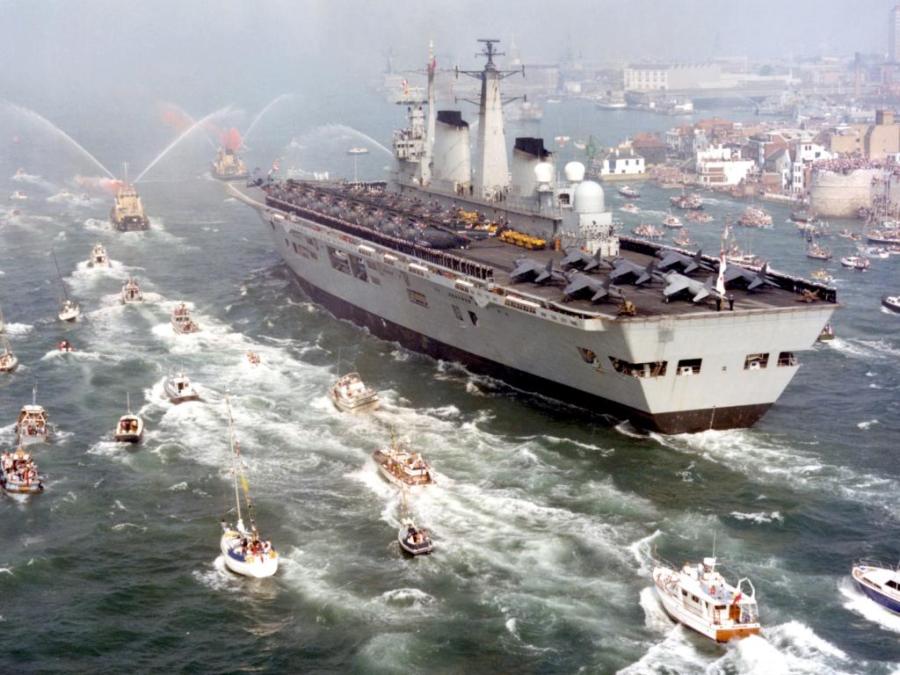
Conflicts in the Former Yugoslavia
Royal Navy Sea Harriers were deployed during the 1992–1995 Bosnian conflict in the former Yugoslavia (Serbian forces were fighting Bosnian Muslim forces) to enforce a no fly zone and conduct raids against Serbian forces (1 Sea Harrier was shot down by a SAM over Gorazde in 1994. The first combat loss for the Royal Navy since the Falklands War in 1982). They were again deployed to the region to police a no fly zone over the Federal Republic of Yugoslavia during the Kosovo War in 1999 to keep Serbian MiG’s and helicopters grounded.

SEA HARRIER IN CIVILIAN HANDS
Although the Royal Navy Sea Harriers have long been retired from military service, one does remain flying in the United States. Mr. Art Nalls, a retired USMC Harrier pilot and test pilot purchased a demilitarized ex-Royal Navy Sea Harrier F(A).2 and restored it for flight as a civilian warbird. Due to his past career he has been certified by the FAA to fly the Sea Harrier and often appears at airshows for flying displays (funded by sponsors to cover the expensive fuel costs). He also now has a two seat T.Mk.8 Harrier trainer and a third Harrier both of which he plans to also fly in the future.
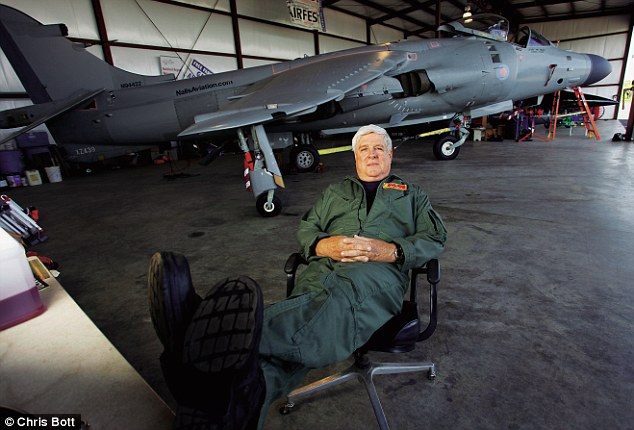
Up next I will discuss the history of second generation V/STOL combat aircraft including the McDonnell Douglas and British Aerospace Harrier II. I will also take a look at the Soviet era advanced supersonic prototype Yakovlev Yak-141 Freestyle fighter.
References:
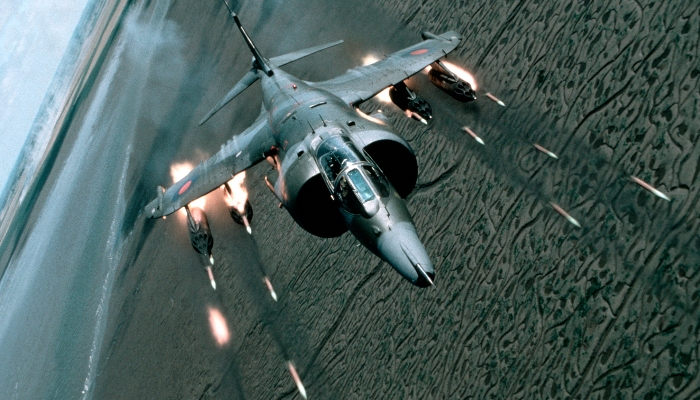
That was absolutely fascinating and thorough
LikeLiked by 1 person
Thanks Tony! Originally I intended to do one post on V/STOL then I started to remember how many different types I had seen along with all the prototypes etc. Had to expand!
LikeLiked by 1 person
Hahaha yeah Ive started a few articles like that over the last year. I confess I do have a soft spot for the Yak-38. I am not saying I would want to fly one just that I have an interest in it
LikeLiked by 1 person
The example I saw at the Russian Air Force Museum actually has rocket pods attached. You will note in all the Soviet Navy photos I used they seemed to always have empty weapons pylons
LikeLiked by 1 person
I do like the look of the crazy Yak-38UM two seat trainer!
LikeLiked by 1 person
How did that fly? Apparently range was so poor on the two seater that it could barely get outside the perimeter of some of the airfields in Ukraine before it had to turn back! Still not as bad as the French Mirage IIIV with its NINE engines (8 lift and one forward thrust). It had an endurance of around 7 minutes.
LikeLiked by 1 person
All in all pretty useless!
LikeLiked by 1 person
Well its easy for us to say so today but back then there was no real way of knowing if it would ever be made to work without going for it. They didn’t have the luxury of advanced computer simulation back then which has worked so well today for the F-35B…Uh hum….Yes….Enough said.
LikeLiked by 1 person
The maintenance of 9 engine aircraft would have been a nightmare but it was a valid idea back then for sure
LikeLiked by 1 person
Great post and amazing photos!
LikeLiked by 1 person
Thanks. I spent a lot of time finding a good variety of photos plus my own
LikeLike
[…] my previous blogs I discussed the early experimental, prototype and operational V/STOL combat jet aircraft that were developed in the late 1950’s through to the late […]
LikeLike
[…] the early experimental, prototype and operational V/STOL combat jet aircraft such as the Harrier and Harrier II that were developed in the late 1950’s through to the 1980’s. By the […]
LikeLike